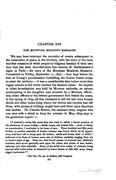
[p. 517]
CHAPTER XVI
THE MOUNTAIN MEADOWS MASSACRE
WE may here interrupt the narrative of events subsequent to the restoration of peace in the territory, with the story of the most horrible massacre of white people by religious fanatics of their own race that has been recorded since that famous St. Bartholemew's night in Paris— the story of the Mountain Meadows Massacre. Committed on Friday, September 11, 1857, — four days before the date of Young's proclamation forbidding the United States troops to enter the territory — it was a considerable time before more than vague rumors of the crime reached the Eastern states. No inquest or other investigation was held by Mormon authority, no person participating in the slaughter was arrested by a Mormon officer; and, when officers of the federal government first visited the scene, in the spring of 1859, all that remained to tell the tale were human skulls and other bones lying where the wolves and coyotes had left them, with scraps of clothing caught here and there upon the vines and bushes. Dr. Charles Brewer, the assistant army surgeon who was sent with a detail to bury the remains in May, 1859, says in his grewsome report:—
"I reached a ravine fifty yards from the road, in which I found portions of the skeletons of many bodies,—skulls, bones, and matted hair, — most of which, on examination, I concluded to be those of men. Three hundred and fifty yards further on another assembly of human remains was found, which, by all appearance, had been left to decay upon the surface; skulls and bones, most of which I believed to be those of women, some also of children, probably ranging from six to twelve years of age. Here, too, were found masses of women's hair, children's bonnets, such as are generally used upon the plains, and pieces of lace, muslin, calicoes, and other materials. Many of the skulls bore marks of violence, being pierced with bullet holes, or shattered by heavy blows, or cleft with some sharp-edged instrument."1
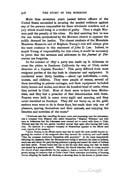
[p. 518]
More than seventeen years passed before officers of the United States succeeded in securing the needed evidence against any of the persons responsible for these wholesale murders, and a jury which would bring in a verdict of guilty. Then a single Mormon paid the penalty of his crime. He died asserting that he was the one victim surrendered by the Mormon church to appease the public demand for justice. The closest students of the Mountain Meadows Massacre and of Brigham Young's rule will always give the most credence to this statement of John D. Lee. Indeed, to acquit Young of responsibility for this crime, it would be necessary to prove that the sermons and addresses in the Journal of Discourses are forgeries.
In the summer of 1857 a party was made up in Arkansas to cross the plains to Southern California by way of Utah, under direction of a Captain Fancher.1 This party differed from most emigrant parties of the day both in character and equipment. It numbered some thirty families, — about 140 individuals, — men, women, and children. They were people of means, several of them travelling in private carriages, and their equipment included thirty horses and mules, and about six hundred head of cattle, when they arrived in Utah. Most of them seem to have been Methodists, and they had a preacher of that denomination with them. Prayers were held in camp every night and morning, and they never travelled on Sundays. They did not hurry on, as the gold-seekers were wont to do in those days, but made their trip one of pleasure, sparing themselves and their animals, and enjoying the beauties and novelties of the route.2
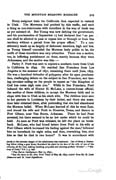
[p. 519]
Every emigrant train for California then expected to restock in Utah. The Mormons had profited by this traffic, and such a thing as non-intercourse with travellers in the way of trade was as yet unheard of. But Young was now defying the government, and his proclamation of September 15 had declared that "no person shall be allowed to pass or repass into or through or from this territory without a permit from the proper officer." To a constituency made up so largely of dishonest members, high and low, as Young himself conceded the Mormon body politic to be, the outfit of these travellers was very attractive. There was a motive, too, in inflicting punishment on them, merely because they were Arkansans, and the motive was this: —
Parley P. Pratt was sent to explore a southern route from Utah to California in 1849. He reached San Francisco from Los Angeles in the summer of 1851, remaining there until June, 1855. He was a fanatical defender of polygamy after its open proclamation, challenging debate on the subject in San Francisco, and issuing circulars calling on the people to repent as "the Kingdom of God has come nigh unto you." While in San Francisco, Pratt induced the wife of Hector H. McLean, a custom-house official, the mother of three children, to accept the Mormon faith and to elope with him to Utah as his ninth wife. The children were sent to her parents in Louisiana by their father, and there she sometime later obtained them, after pretending that she had abandoned the Mormon belief. When McLean learned of this he went East, and traced his wife and Pratt to Houston, Texas, and thence to Fort Gibson, near Van Buren, Arkansas. There he had Pratt arrested, but there seemed to be no law under which he could be held. As soon as Pratt was released, he left the place on horse-back. McLean, who had found letters from Pratt to his wife at Fort Gibson which increased his feeling against the man,1 followed him on horseback for eight miles, and then, overtaking him, shot him so that he died in two hours.2 It was in accordance with
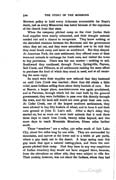
[p. 520]
Mormon policy to hold every Arkansan accountable for Pratt's death, just as every Missourian was hated because of the expulsion of the church from that state.
When the company pitched camp on the river Jordan their food supplies were nearly exhausted, and their draught animals needed rest and a chance to recuperate. They knew nothing of the disturbed relations between the Mormons and the government when they set out, and they were astonished now to be told that they must break camp and move on southward. But they obeyed. At American Fork, the next settlement, they offered some of their worn-out animals in exchange for fresh ones, and visited the town to buy provisions. There was but one answer—nothing to sell. Southward they continued, through Provo, Springville, Payson, Salt Creek, and Fillmore, at all settlements making the same effort to purchase the food of which they stood in need, and at all receiving the same reply.
So much were their supplies now reduced that they hastened on until Corn Creek was reached; there they did obtain a little relief, some Indians selling them about thirty bushels of corn. But at Beaver, a larger place, non-intercourse was again proclaimed, and at Parowan, through which led the road built by the general government, they were forbidden to pass over this directly through the town, and the local mill would not even grind their own corn. At Cedar Creek, one of the largest southern settlements, they were allowed to buy fifty bushels of wheat, and to have it and their corn ground at John D. Lee's mill. After a day's delay they started on, but so worn out were their animals that it took them three days to reach Iron Creek, twenty miles beyond, and two more days to reach Mountain Meadows, fifteen miles farther south.
These "meadows" are a valley, 350 miles south of Salt Lake City, about five miles long by one wide. They are surrounded by mountains, and narrow at the lower end to a width of 400 yards, where a gap leads out to the desert. A large spring near this gap made that spot a natural resting-place, and there the emigrants pitched their camp. Had they been in any way suspicious of Indian treachery they would not have stopped there, because, from the elevations on either side, they were subject to rifle fire. Their anxiety, however, was not about the Indians, whom they had
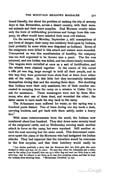
[p. 521]
found friendly, but about the problem of making the trip of seventy days to San Bernardino, across a desert country, with their worn-out animals and their scant supplies. Had Mormon cruelty taken only the form of withholding provisions and forage from this company, its effect would have satisfied their most evil wishers.
On the morning of Monday, September 7, still unsuspicious of any form of danger, their camp was suddenly fired upon by Indians, (and probably by some white men disguised as Indians). Seven of the emigrants were killed in this attack and sixteen were wounded. Unexpected as was this manifestation of hostility, the company was too well organized to be thrown into a panic. The fire was returned, and one Indian was killed, and two chiefs fatally wounded. The wagons were corralled at once as a sort of fortification, and the wheels were chained together. In the centre of this corral a rifle pit was dug, large enough to hold all their people, and in this way they were protected from shots fired at them from either side of the valley. In this little fort they successfully defended themselves during that and the ensuing three days. Not doubting that Indians were their only assailants, two of their number succeeded in escaping from the camp on a mission to Cedar City to ask for assistance. These messengers were met by three Mormons, who shot one of them dead, and wounded the other; the latter seems to have made his way back to the camp.
The Arkansans soon suffered for water, as the spring was a hundred yards distant. Two of them during one day made a dash, carrying buckets, and got back with them safely, under a heavy fire.1
With some reënforcements from the south, the Indians now numbered about four hundred. They shot down some seventy head of the emigrants' cattle, and on Wednesday evening made another attack in force on the camp, but were repulsed. Still another attack the next morning had the same result. This determined resistance upset the plans of the Mormons who had instigated the Indian attacks. They had expected that the travellers would be overcome in the first surprise, and that their butchery would easily be
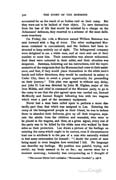
[p. 522]
accounted for as the result of an Indian raid on their camp. But they were not to be balked of their object. To save themselves from the loss of life that would be entailed by a charge on the Arkansans' defences, they resorted to a scheme of the most deliberate treachery.
On Friday, the 11th, a Mormon named William Bateman was sent forward with a flag of truce. The other undisguised Mormons remained in concealment, and the Indians had been instructed to keep entirely out of sight. The beleaguered company were delighted to see a white man, and at once sent one of their number to meet him. Their ammunition was almost exhausted, their dead were unburied in their midst, and their situation was desperate. Bateman, following out his instructions, told the representative of the emigrants that the Mormons had come to their assistance, and that, if they would place themselves in the white men's hands and follow directions, they would be conducted in safety to Cedar City, there to await a proper opportunity for proceeding on their journey.1 This plan was agreed to without any delay, and John D. Lee was directed by John M. Higbee, major of the Iron Militia, and chief in command of the Mormon party, to go to the camp to see that the plot agreed upon was carried out, Samuel McMurdy and Samuel Knight following him with two wagons which were a part of the necessary equipment.
Never had a man been called upon to perform a more dastardly part than that which was assigned to Lee. Entering the camp of the beleaguered people as their friend, he was to induce them to abandon their defences, give up all their weapons, separate the adults from the children and wounded, who were to be placed in the wagons, and then, at a given signal, every one of the party was to be killed by the white men who walked by their sides as their protectors. Lee draws a picture of his feelings on entering the camp which ought to be correct, even if circumstances lead one to attribute it to the pen of a man who naturally wished to find some extenuation for himself: "I doubt the power of man being equal to even imagine how wretched I felt. No language can describe my feelings. My position was painful, trying, and awful; my brain seemed to be on fire; my nerves were for a moment unstrung; humanity was overpowering as I thought of
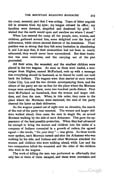
[p. 523]
the cruel, unmanly part that I was acting. Tears of bitter anguish fell in streams from my eyes; my tongue refused its office; my faculties were dormant, stupefied and deadened by grief. I wished that the earth would open and swallow me where I stood."
When Lee entered the camp all the people, men, women, and children, gathered around him, some delighted over the hope of deliverance, while others showed distrust of his intentions. Their position was so strong that they felt some hesitation in abandoning it, and Lee says that, if their ammunition had not been so nearly exhausted, they would never have surrendered. But their hesitation was soon overcome, and the carrying out of the plot proceeded.
All their arms, the wounded, and the smallest children were placed in the two wagons. As soon as these were loaded, a messenger from Higbee, named McFarland, rode up with a message that everything should be hastened, as he feared he could not hold back the Indians. The wagons were then started at once toward Cedar City, Lee and the two drivers accompanying them, and the others of the party set out on foot for the place where the Mormon troops were awaiting them, some two hundred yards distant. First went McFarland on horseback, then the women and larger children, and then the men. When, in this order, they came to the place where the Mormons were stationed, the men of the party cheered the latter as their deliverers.
As the wagons passed out of sight over an elevation, the march of the rest of the party was resumed. The women and larger children walked ahead, then came the men in single file, an armed Mormon walking by the side of each Arkansan. This gave the appearance of the best possible protection. When they had advanced far enough to bring the women and children into the midst of a company of Indians concealed in a growth of cedars, the agreed signal — the words, "Do your duty" — was given. As these words were spoken, each Mormon turned and shot the Arkansan who was walking by his side, and Indians and other Mormons attacked the women and children who were walking ahead, while Lee and his two companions killed the wounded and the older of the children who were in the wagons.
The work of killing the men was performed so effectually that only two or three of them escaped, and these were overtaken and
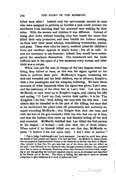
[p. 524]
killed soon after.1 Indeed, only the nervousness natural to men who were assigned to perform so horrible a task could prevent the murderers from shooting dead the unarmed men walking by their sides. With the women and children it was different. Instead of being shot down without warning, they first heard the shots that killed their only protectors, and then beheld the Indians rushing on them with their usual whoops, brandishing tomahawks, knives, and guns. There were cries for mercy, mothers' pleas for children's lives, and maidens' appeals to manly honor; but all in vain. It was not necessary to use firearms; indeed, they would have endangered the assailants themselves. The tomahawk and the knife sufficed, and in the space of a few moments every woman and older child was a corpse.
When Lee and the men in charge of the two wagons heard the firing, they halted at once, as this was the signal agreed on for them to perform their part. McMurdy's wagon, containing the sick and wounded and the little children, was in advance, Knight's, with a few passengers and the weapons, following. We have three accounts of what happened when the signal was given, Lee's own, and the testimony of the other two at Lee's trial. Lee says that McMurdy at once went up to Knight's wagon, and, raising his rifle and saying, "O Lord my God, receive their spirits; it is for Thy Kingdom I do this," fired, killing two men with the first shot. Lee admits that he intended to do his part of the killing, but says that in his excitement his pistol went off prematurely and narrowly escaped wounding McMurdy; that Knight then shot one man, and with the butt of his gun brained a little boy who had run up to him, and that the Indians then came up and finished killing all the sick and wounded. McMurdy testified that Lee killed the first person in his wagon — a woman — and also shot two or three others. When asked if he himself killed any one that day, McMurdy replied, "I believe I am not upon trial. I don't wish to answer."
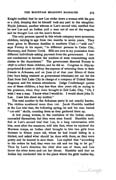
[p. 525]
Knight testified that he saw Lee strike down a woman with his gun or a club, denying that he himself took any part in the slaughter. Nephi Johnson, another witness at Lee's second trial, testified that he saw Lee and an Indian pull a man out of one of the wagons, and he thought Lee cut the man's throat.
The only persons spared in this whole company were seventeen children, varying in age from two months to seven years. They were given to Mormon families in southern Utah —"sold out," says Forney in his report, "to different persons in Cedar City, Harmony, and Painter Creek. Bills are now in my possession from different individuals asking payment from the government. I cannot condescend to become the medium of even transmitting such claims to the department." The government directed Forney in 1858 to collect these children, and he did so. Congress in 1859 appropriated $10,000 to defray the expense of returning them to their friends in Arkansas, and on June 27 of that year fifteen of them (two boys being retained as government witnesses) set out for the East from Salt Lake City in charge of a company of United States dragoons and five women attendants. Judge Cradlebaugh quotes one of these children, a boy less than nine years old, as saying in his presence, when they were brought to Salt Lake City, "Oh, I wish I was a man. I know what I would do. I would shoot John D. Lee. I saw him shoot my mother."
The total number in the Arkansas party is not exactly known. The victims numbered more than 120. Jacob Hamblin testified at the Lee trial that, the following spring, he and his man buried "120 odd" skulls, counting them as they gathered them up.
A few young women, in the confusion of the Indian attack, concealed themselves, but they were soon found. Hamblin testified at Lee's second trial that Lee, in a long conversation with him, soon after the massacre, told him that, when he rejoined the Mormon troops, an Indian chief brought to him two girls from thirteen to fifteen years old, whom he had found hiding in a thicket, and asked what should be done with them, as they were pretty and he wanted to save them. Lee replied that "according to the orders he had, they were too old and too big to let go." Then by Lee's direction the chief shot one of them, and Lee threw the other down and cut her throat. Hamblin said that an Indian boy conducted him to the place where the girls' bodies lay,
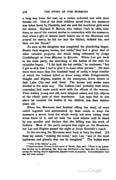
[p. 526]
a long way from the rest, up a ravine, unburied and with their throats cut. One of the little children saved from the massacre was taken home by Hamblin, and she said the murdered girls were her sisters. Richard F. Burton, who visited Utah in 1860, mentions, as one of the current stories in connection with the massacre, that, when a girl of sixteen knelt before one of the Mormons and prayed for mercy, he led her into the thicket, violated her, and then cut her throat.1
As soon as the slaughter was completed the plundering began. Beside their wagons, horses, and cattle,2 they had a great deal of other valuable property, the whole being estimated by Judge Cradlebaugh at from $60,000 to $70,000. When Lee got back to the main party, the searching of the bodies of the men for valuables began. "I did hold the hat awhile," he confesses, "but I got so sick that I had to give it to some other person." He says there were more than five hundred head of cattle, a large number of which the Indians killed or drove away, while Klingensmith, Haight, and Higbee, leaders in the enterprise, drove others to Salt Lake City and sold them. The horses and mules were divided in the same way. The Indians (and probably their white comrades) had made quick work with the effects of the women. Their bodies, young and old, were stripped naked, and left, objects of the ribald jests of their murderers. Lee says that in one place he counted the bodies of ten children less than sixteen years old.
When the Mormons had finished rifling the dead, all were called together and admonished by their chiefs to keep the massacre a secret from the whole world, not even letting their wives know of it, and all took the most solemn oath to stand by one another and declare that the killing was the work of Indians. Most of the party camped that night on the Meadows, but Lee and Higbee passed the night at Jacob Hamblin's ranch.
In the morning the Mormons went back to bury the dead. All these lay naked, "making the scene," says Lee, "one of the most loathsome and ghastly that can be imagined." The bodies were
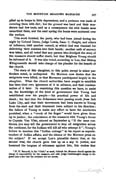
[p. 527]
piled up in heaps in little depressions, and a pretence was made of covering them with dirt; but the ground was hard and their murderers had few tools, and as a consequence the wild beasts soon unearthed them, and the next spring the bones were scattered over the surface.
This work finished, the party, who had been joined during the night by Colonel Dame, Judge Lewis, Isaac C. Haight, and others of influence, held another council, at which God was thanked for delivering their enemies into their hands; another oath of secrecy was taken, and all voted that any person who divulged the story of the massacre should suffer death, but that Brigham Young should be informed of it. It was also voted, according to Lee, that Bishop Klingensmith should take charge of the plunder for the benefit of the church.
The story of this slaughter, to this point, except in minor particulars noted, is undisputed. No Mormon now denies that the emigrants were killed, or that Mormons participated largely in the slaughter. What the church authorities have sought to establish has been their own ignorance of it in advance, and their condemnation of it later. In examining this question we have, to assist us, the knowledge of the kind of government that Young had established over his people — his practical power of life and death; the fact that the Arkansans were passing south from Salt Lake City, and that their movements had been known to Young from the start and their treatment been subject to his direction; the failure of Young to make any effort to have the murderers punished, when a "crook of his finger" would have given them up to justice; the coincidence of the massacre with Young's threat to Captain Van Vliet, uttered on September 9, "If the issue continues, you may tell the government to stop all emigration across the continent, for the Indians will kill all who attempt it"; Young's failure to mention this "Indian outrage" in his report as superintendent of Indian affairs, and the silence of the Mormon press on the subject.1 If we accept Lee's plausible theory that, at his second trial, the church gave him up as a sop to justice, and loosened the tongues of witnesses against him, this makes that
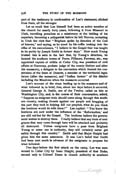
[p. 528]
part of the testimony in confirmation of Lee's statement, elicited from them, all the stronger.
Let us recall that Lee himself had been an active member of the church for nearly forty years, following it from Missouri to Utah, travelling penniless as a missionary at the bidding of his superiors, becoming a polygamist before he left Nauvoo, accepting in Utah the view that "Brigham spoke by direction of the God of heaven," and saying, as he stood by his coffin looking into the rifles of his executioners, "I believe in the Gospel that was taught in its purity by Joseph Smith in former days." How much Young trusted him is seen in the fact that, by Young's direction, he located the southern towns of Provo, Fillmore, Parowan, etc., was appointed captain of militia at Cedar City, was president of civil affairs at Harmony, probate judge of the county (before and after the massacre), a delegate to the convention which framed the constitution of the State of Deseret, a member of the territorial legislature (after the massacre), and "Indian farmer" of the district including the Meadows when the massacre occurred.
Lee's account of the steps leading up to the massacre and of what followed is, in brief, that, about ten days before it occurred, General George A. Smith, one of the Twelve, called on him at Washington City, and, in the course of their conversation, asked, "Suppose an emigrant train should come along through this southern country, making threats against our people and bragging of the part they took in helping kill our prophet, what do you think the brethren would do with them?" Lee replied: "You know the brethren are now under the influence of the 'Reformation,' and are still red-hot for the Gospel. The brethren believe the government wishes to destroy them. I really believe that any train of emigrants that may come through here will be attacked and probably all destroyed. Unless emigrants have a pass from Brigham Young or some one in authority, they will certainly never get safely through this country." Smith said that Major Haight had given him the same assurance. It was Lee's belief that Smith had been sent south in advance of the emigrants to prepare for what followed.
Two days before the first attack on the camp, Lee was summoned to Cedar City by Isaac Haight, president of that Stake, second only to Colonel Dame in church authority in southern
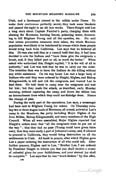
[p. 529]
Utah, and a lieutenant colonel in the militia under Dame. To make their conference perfectly secret, they took some blankets and passed the night in an old iron works. There Haight told Lee a long story about Captain Fancher's party, charging them with abusing the Mormons, burning fences, poisoning water, threatening to kill Brigham Young and all the apostles, etc. He said that unless preventive measures were taken, the whole Mormon population were likely to be butchered by troops which these people would bring back from California. Lee says that he believed all this. He was also told that, at a council held that day, it had been decided to arm the Indians and "have them give the emigrants a brush, and, if they killed part or all, so much the better." When asked who authorized this, Haight replied, "It is the will of all in authority," and Lee was told that he was to carry out the order. The intention then was to have the Indians do the killing without any white assistance. On his way home Lee met a large body of Indians who said they were ordered by Haight, Higbee, and Bishop Klingensmith, to kill and rob the emigrants, and wanted Lee to lead them. He told them to camp near the emigrants and wait for him; but they made the attack, as described, early Monday morning, without capturing the camp, and drove the whites into an intrenchment from which they could not dislodge them. Hence the change of plan.
During the early part of the operations, Lee says, a messenger had been sent to Brigham Young for orders. On Thursday evening two or three wagon loads of Mormons, all armed, arrived at Lee's camp in the Meadows, the party including Major Higbee of the Iron Militia, Bishop Klingensmith, and many members of the High Council. When all were assembled, Major Higbee reported that Haight's orders were that "all the emigrants must be put out of the way"; that they had no pass (Young could have given them one); that they were really a part of Johnson's army, and, if allowed to proceed to California, they would bring destruction on all the settlements in Utah. All knelt in prayer, after which Higbee gave Lee a paper ordering the destruction of all who could talk. After further prayers, Higbee said to Lee, "Brother Lee, I am ordered by President Haight to inform you that you shall receive a crown of celestial glory for your faithfulness, and your eternal joy shall be complete." Lee says that he was "much shaken" by this offer,
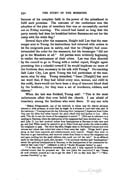
[p. 530]
because of his complete faith in the power of the priesthood to fulfil such promises. The outcome of the conference was the adoption of the plan of treachery that was so successfully carried out on Friday morning. The council had lasted so long that the party merely had time for breakfast before Bateman set out for the camp with his white flag.1
Several days after the massacre, Haight told Lee that the messenger sent to Young for instructions had returned with orders to let the emigrants pass in safety, and that he (Haight) had countermanded the order for the massacre, but his messenger "did not go to the Meadows at all." All parties were evidently beginning to realize the seriousness of their crime. Lee was then directed by the council to go to Young with a verbal report, Haight again promising him a celestial reward if he would implicate no more of the brethren than necessary in his talk with Young.2 On reaching Salt Lake City, Lee gave Young the full particulars of the massacre, step by step. Young remarked, "Isaac [Haight] has sent me word that, if they had killed every man, woman, and child in the outfit, there would not have been a drop of innocent blood shed by the brethren; for they were a set of murderers, robbers, and thieves."
When the tale was finished, Young said: "This is the most unfortunate affair that ever befell the church. I am afraid of treachery among the brethren who were there. If any one tells
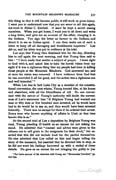
[p. 531]
this thing so that it will become public, it will work us great injury. I want you to understand now that you are never to tell this again, not even to Heber C. Kimball. It must be kept a secret among ourselves. When you get home, I want you to sit down and write a long letter, and give me an account of the affair, charging it to the Indians. You sign the letter as farmer to the Indians, and direct it to me as Indian agent. I can then make use of such a letter to keep off all damaging and troublesome inquirers." Lee did so, and his letter was put in evidence at his trial.
Lee says that Young then dismissed him for the day, directing him to call again the next morning, and that Young then said to him: "I have made that matter a subject of prayer. I went right to God with it, and asked him to take the horrid vision from my sight if it was a righteous thing that my people had done in killing those people at the Mountain Meadows. God answered me, and at once the vision was removed. I have evidence from God that he has overruled it all for good, and the action was a righteous one and well intended."1
When Lee was in Salt Lake City as a member of the constitutional convention, the next winter, Young treated him, at his house and elsewhere, with all the friendliness of old. No one conversant with the extent of Young's authority will doubt the correctness of Lee's statement that "if Brigham Young had wanted one man or fifty men or five hundred men arrested, all he would have had to do would be to say so, and they would have been arrested instantly. There was no escape for them if he ordered their arrest. Every man who knows anything of affairs in Utah at that time knows this is so."
At the second trial of Lee a deposition by Brigham Young was read, Young pleading ill health as an excuse for not taking the stand. He admitted that "counsel and advice were given to the citizens not to sell grain to the emigrants for their stock," but asserted that this did not include food for the parties themselves. He also admitted that Lee called on him and began telling the story of the massacre, but asserted that he directed him to stop, as he did not want his feelings harrowed up with a recital of these details. He gave as an excuse for not bringing the guilty to jus-
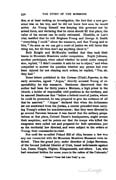
[p. 532]
tice, or at least making an investigation, the fact that a new governor was on his way, and he did not know how soon he would arrive. As Young himself was keeping this governor out by armed force, and declaring that he alone should fill that place, the value of his excuse can be easily estimated. Hamblin, at Lee's trial, testified that he told Brigham Young and George A. Smith "everything I could" about the massacre, and that Young said to him, "As soon as we can get a court of justice we will ferret this thing out, but till then don't say anything about it."
Both Knight and McMurphy testified that they took their teams to Mountain Meadows under compulsion. Nephi Johnson, another participant, when asked whether he acted under compulsion, replied, "I didn't consider it safe for me to object," and when compelled to answer the question whether any person had ever been injured for not obeying such orders, he replied, "Yes, sir, they had."
Some letters published in the Corinne (Utah) Reporter, in the early seventies, signed "Argus," directly accused Young of responsibility for this massacre. Stenhouse discovered that the author had been for thirty years a Mormon, a high priest in the church, a holder of responsible civil positions in the territory, and he assured Stenhouse that "before a federal court of justice, where he could be protected, he was prepared to give the evidence of all that he asserted." "Argus" declared that when the Arkansans set out southward from the Jordan, a courier preceded them carrying Young's orders for non-intercourse; that they were directed to go around Parowan because it was feared that the military preparations at that place, Colonel Dame's headquarters, might arouse their suspicion; and he points out that the troops who killed the emigrants were called out and prepared for field operations, just as the territorial law directed, and were subject to the orders of Young, their commander-in-chief.
Not until the so-called Poland Bill of 1874 became a law was any one connected with the Mountain Meadows Massacre even indicted. Then the grand jury, under direction of Judge Boreman, of the Second Judicial District of Utah, found indictments against Lee, Dame, Haight, Higbee, Klingensmith, and others. Lee, who had remained hidden for some years in the canon of the Colorado,1
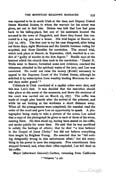
[p. 533]
was reported to be in south Utah at the time, and Deputy United States Marshal Stokes, to whom the warrant for his arrest was given, set out to find him. Stokes was told that Lee had gone back to his hiding-place, but one of his assistants located the accused in the town of Panguitch, and there they found him concealed in a log pen near a house. His trial began at Beaver, on July 12, 1875. The first jury to try his case disagreed, after being out three days, eight Mormons and the Gentile foreman voting for acquittal, and three Gentiles for conviction. The second trial, which took place at Beaver, in September, 1876, resulted in a verdict of "guilty of murder in the first degree." Beadle says of the interest which the church then took in his conviction: "Daniel H. Wells went to Beaver, furnished some new evidence, coached the witnesses, attended to the spiritual wants of the jury, and Lee was convicted. He could not raise the money ($1000) necessary to appeal to the Supreme Court of the United States, although he solicited it by subscription from wealthy leading Mormons for several days under guard."1
Criminals in Utah convicted of a capital crime were shot, and this was Lee's fate. It was decided that the execution should take place at the scene of the massacre, and there the sentence of the court was carried out on March 23, 1877. The coffin was made of rough pine boards after the arrival of the prisoner, and while he sat looking at the workmen a short distance away. When all the arrangements were completed, the marshal read the order of the court and gave Lee an opportunity to speak. A photographer being ready to take a picture of the scene, Lee asked that a copy of the photograph be given to each of three of his wives, naming them. He then stood up, having been seated on his coffin, and spoke quietly for some time. He said that he was sacrificed to satisfy the feelings of others; that he died "a true believer in the Gospel of Jesus Christ," but did not believe everything then taught by Brigham Young. He asserted that he "did nothing designedly wrong in this unfortunate affair," but did everything in his power to save the emigrants. Five executioners then stepped forward, and, when their rifles exploded, Lee fell dead on his coffin.
Major (afterward General) Carlton, returning from California
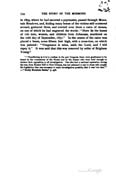
[p. 534]
in 1859, where he had escorted a paymaster, passed through Mountain Meadows, and, finding many bones of the victims still scattered around, gathered them, and erected over them a cairn of stones, on one of which he had engraved the words: "Here lie the bones of 120 men, women, and children from Arkansas, murdered on the 10th day of September, 1857." In the centre of the cairn was placed a beam, some fifteen feet high, with a cross-tree, on which was painted: "Vengeance is mine, saith the Lord, and I will repay it." It was said that this was removed by order of Brigham Young.1